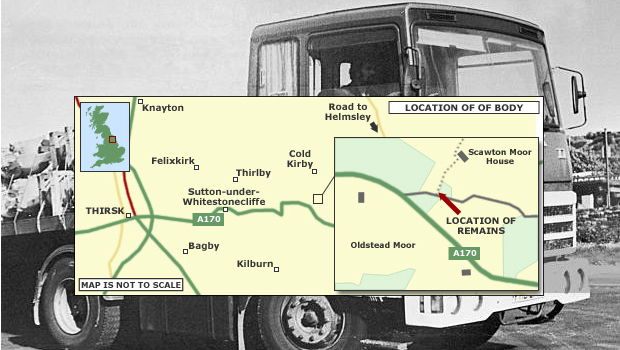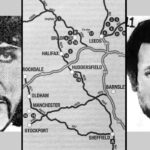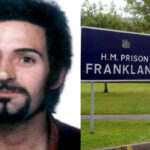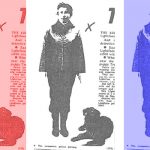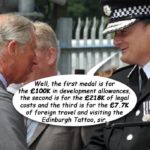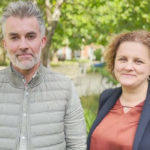The Ripper’s Lorry Murders 6
“Hope”: More information
by TIM HICKS and CHRIS CLARK
~~~~~
Introduction
Until now, the conventional wisdom was that all of serial killer Peter Sutcliffe’s attacks were launched from his car. However, retired police intelligence officer Chris was convinced that this was not credible and conducted his own research on the basis that Sutcliffe used his lorry on some of the murders. This has led to some startling revelations and new information on how Peter Sutcliffe operated.
The authors have collated all the cases Chris has identified as committed from Sutcliffe’s lorry. They are shown as “V5” in Column F “Vehicle Used” in Table 13, here.
- Table 13 Victim list and vehicles used
The murders committed while Sutcliffe was driving his lorry are covered in greater detail in articles as follows:
The Ripper’s Lorry Murders Part 1. Bedgebury Forest Woman
The Ripper’s Lorry Murders Part 2. Ilkley: Proof positive
The Ripper’s Lorry Murders Part 3. More ligature killings
The Ripper’s Lorry Murders Part 4. Doncaster and Sheffield
The Ripper’s Lorry Murders Part 5. Bristol, Sussex and Essex
The Ripper’s Lorry Murders Part 6. “Hope”: More information.
The Ripper’s Lorry Murders Part 7. Leicester and Nottingham
The Ripper’s Lorry Murders Part 8. Hammersmith and Leicester
The Ripper’s Lorry Murders Part 9. London
For editorial reasons, they have not been published in chronological order.
Background: Sutcliffe’s access to lorries
Here Chris gives the background and more information on the individual murders the authors believe were committed from Sutcliffe’s lorry.
“Sutcliffe then started employment as a lorry driver on the 29th of September of 1975 working for a Common Road Tyre Company, Okenshaw situated at the junction of the M62 Motorway and a spur off the M606 into Bradford; the work involved short and medium distance hauls all over the North and the Midlands. He used the experience to familiarise himself with the network of motorways and trunk roads linking its destinations to each other including the best access routes to many towns and city centres an art that he perfected from his already overall extensive knowledge that he had gained from socially driving around the North of England, the Midlands and London and Home Counties.
However after just over a fortnight’s employment on 15 October 1975 he was caught stealing second hand tyres and the police were informed. Sutcliffe was arrested and during the following year after entering a guilty plea at a later court hearing on 5 March 1976 he was fined and he was later sacked in that April for bad time keeping.
In October 1976 Sutcliffe finally found work as a lorry driver for T&WH Clark (Holdings Ltd) situated on the Canal Road Industrial Estate between Shipley and Bradford. They were a small engineering transport firm and working for them took him all over the country and involved a lot of overnight stops where he would use the bunk bed in the rear of the cabin and he was once on his own again with no one to account to and left to his own devices. He started proving himself over several months in one of the firm’s four and six ton big rigid Lorries and then onto a Ford Transcontinental which at £250,000 was the most expensive and advanced HGV vehicle in England at the time.
Sutcliffe clearly suffered from ‘little man syndrome’ as well as ‘obsessive compulsive disorder’ and enjoyed the height, mass and speed of the lorry; as well as spending hours cleaning and polishing both the inside and outside of the cabin whilst awaiting loading and unloading. This would have removed any forensic evidence from the cab.
At work Sutcliffe was one of Clark’s most conscientious drivers who kept immaculate logs and repair records. His workmates saw him as a loner who never showed any sign of violence did not swear or speak crudely about women although he christened his lorry ‘Wee Willie’ which was a source of amusement for them. Sutcliffe was well liked by his bosses and colleagues alike and was recognised to be brilliant at roping-and-sheeting large and often difficult loads. He was the person that everyone turned to when they got a delivery ticket for an unfamiliar town he had ‘A-Z’ street maps for every possible destination.
At Clark’s at the beginning of 1980, Sutcliffe must have felt he had got a really secure job even a job for life. The firm had been forced to sack all their drivers for alleged thefts from the loads but not him. He had been the one exception the one driver Chairman Tom Clark felt he could trust. Yet there were those at Clarks who had noticed Sutcliffe’s habit of occasionally turning up at work with false number plates on his car. A fact considered insignificant by his workmates, at least until the first weekend of 1981.
The management had been so impressed with Sutcliffe regarding him as possessing all the virtues required by the best lorry drivers that he was chosen to appear in a promotional brochure for the firm. In the following photograph he is shown hair in place, beard neatly trimmed as usual behind the wheel of ‘Wee Willie’ and a giant enlargement of the photograph was given pride of place in the entrance to the firm’s offices.”
Background The “Nude in the Nettles Murder” (regular readers will be familiar with this)
One of the great murder mysteries of North Yorkshire is the “Nude in the Nettles Murder”. On Friday the 28th of August 1981, North Yorkshire Police (NYP) officers from Thirsk responded to an anonymous telephone call and discovered the decomposing body of a woman at Sutton Bank just off the A170 on the North York Moors.
Despite determined and relentless efforts, NYP have not been able to identify her. An appeal for information was made by NYP in 2011 as part of a cold case review gives the facts of the case as follows:
“An anonymous male caller telephoned North Yorkshire Police providing the exact location for police officers to search. On Friday 28th August 1981 Police officers attended the described location, a lay by on the unclassified road leading from Sutton Bank to the villages of Scawton and Rievaulx. The location is a quiet road used by local people and occasional caravaners heading to a nearby site. The rural area consists mainly of arable and pasture farmland with occasional conifer plantations. It was to the side of this road and between two small plantations that officers found the skeletal remains of an unknown female laid in undergrowth. This discovery marked the start of an 18 month police investigation led by Detective Chief Superintendent Strickland Maunsel Carter to establisher her identity and why she was there.
A forensic examination of the naked body revealed no jewellery or personal effects laid nearby that may assist in establishing who she was. A Home Office pathologist estimated she may have laid at that place situ for up to two years due to plant growth and state of the body. The post mortem did not establish a cause of death.
What could be established was that body was that of a female, 5’ 2” in height, aged between thirty five and forty and may have been a mother. The deceased appeared to have short dark coloured hair. There was evidence of an old fracture to the right ankle but nothing conclusive to provide an identification.
During the 18 month police investigation extensive enquires were conducted and a number of people were identified as possible matches for the deceased but none could be positively identified as the deceased.
A line of enquiry reported on at the time related to a female prisoner that had escaped from Askham Grange open prison almost two years earlier but has not been seen since or spoken to by police.
Thirty years later the same questions remain. The anonymous male caller that started this 30 years police investigation may have the answer to the other questions – who is this lady left undiscovered at the top of Sutton Bank?, what was she doing there? and how did she die.
The thirty years that have elapsed since the discovery of this lady has seen significant developments in police technology that are used in current police investigations, and possibly viewed as normal enquiries.
At the time a three-dimensional wax reconstruction of her head, which was first such reconstruction, indicated the investigators were keen to use new technology. It was a positive actions as the circulations of this image generated significant interest and possible identities but these failed to provide the identification required.
We need to recognise that at the time of her discovery the Police National Computer that holds vehicle and person details was in its infancy, The Automatic Number Plate Recognition (ANPR) had not been invented and the first mobile telephone call to be made in the UK would not take place for another three and half years.
Although the passage of time has changed police technology, North Yorkshire Police’s commitment to finding the answers to these questions remains the same, so that her family can have the answers they deserve. For this reason if you know the identity of the lady or the male caller please make contact.”
The 2011 appeal was closely co-ordinated with the local media, who were commendably supportive of police efforts to try and resolve the case. Article by Jennifer Bell of York Press here.
Failure of the NYP investigations
The “Nude in the Nettles Murder” led to a major investigation by NYP which essentially fell into six phases from the discovery of the body in 1981 to the present. The authors reviewed the investigation and believe serious errors were made in each phase and these are documented in the NYE article here.
Despite all of the police effort and manpower expended on this case over the years, there were only five successes in the 1981 and 2011/2012 investigations. These were:
1981
- The autopsy could not identify the date or cause of death, but analysis of the plant growth confirmed that there had been two seasons of plant growth since the body was dumped, identifying the date of deposition as 1979.
- Witness 1 came forward and confirmed that when he visited the deposition site in 1979, he noticed a foul smell, which the police concluded was from the body decomposing, confirming the year of death as 1979.
- The investigation deduced the victim was a prostitute. However, the authors suspect this may have eliminated Scarborough and the A170 from the geographical assessment, because it did not have a red light district or any history of large scale prostitution. Instead the police investigation may have focussed on A19 truck stops in the belief that “Hope” was a “truck hopper” prostitute that serviced lorry drivers parked overnight in truck stops.
- A facial reconstruction was obtained (see below). This was to lead to an additional and important witness coming forward to the NYE investigation in 2019.
2011
- Body was exhumed and DNA successfully extracted.
Thereafter, NYP appear to have abandoned all interest in the case and are not responding to new witness evidence discovered in the “Nude in the Nettles murder” by local investigative journalists from the NYE.
The NYE investigation into the “Nude in the Nettles”. 2018 onwards
When the authors started publishing Chris’s antecedent investigation into Sutcliffe, they were hopeful they would be able to progress the “Nude in the Nettles” murder. They assessed that it had probably been perpetrated by Sutcliffe, that the 1981 investigation had been poor and had failed because it prematurely focussed on false lines of enquiry. The 2011/2012 investigation had failed to impartially and independently review the case since the original investigation was closed.
The objectives of the authors investigation became and remain:
- To try and identify the woman known as the “Nude in the Nettles”, so her next of kin can be notified and she can have a memorial service in her own name.
- To try and obtain justice for her even at this late stage by identifying her killer.
Please note that the authors state above in point 2 that they wish to identify the killer, not that they want to identify Peter Sutcliffe as the killer. This is because both authors are open minded and recognise that although the evidence is mounting up that it was Sutcliffe, it is possible that it was not and another man or men committed this murder. If this is so, then it means that there could be a killer on the loose, possibly still residing in Scarborough.
The authors and NYE correspondent Nigel Ward always felt that as a local media outlet, the NYE was best placed to provide the local media coverage that would generate local interest and produce information. To assist in the investigation and help generate public interest the authors provisionally gave the victim the name “Hope”.
The NYE always ran a very detailed appeal for witnesses with each article. This bore fruit and a number of key witnesses have come forward with credible evidence, which the authors have been able to develop.
It is well known that Sutcliffe routinely travelled through North Yorkshire as part of his work as a lorry driver. Interestingly at one point the Ripper enquiry was actively considering the possibility that the Ripper may live in North Yorkshire. Following the murder of Irene Richardson in 1977, West Yorkshire Police started checking vehicles to identify if they had tyres matching the tracks found at the crime scene. Cars in West Yorkshire and Harrogate in North Yorkshire were checked. Indicating that the investigation suspected the Yorkshire Ripper might live and/or operate in North Yorkshire.
The NYE investigation has delivered the following successes:
- Chris separately identified that an attack on a woman in Harrogate on the 18th of February 1979 was an attack by the Yorkshire Ripper. NYE investigation here
- The NYE investigation identified Witness 2 (former SBC Councillor Norman Murphy) who confirmed a positive investigation of “Hope” from a facial reconstruction published in an NYE Norman confirmed she was an alcoholic prostitute, that frequented a bus stop in Victoria Road Scarborough.
- Witness 2 stated that he saw a man who may have been Sutcliffe in a café owned by Witness 3 (Iris Scott deceased), who before her death was adamant that Peter Sutcliffe was a regular visitor to her café. This would fit with him making deliveries to Scarborough during his work as a lorry driver.
- Chris identified Witness 4, an associate of Iris Scott, who confirmed that she had told him he had seen Peter Sutcliffe in her café.
- Chris identified a local man (Witness 5), who came forward with important information on the discovery of the body and the identity of the person known as “the mystery caller”. As a result of Witness 5’s evidence, we now have a credible explanation of how the body was discovered and information on the possible identity of “the mystery caller” who remains the prime suspect – wrongly, in the author’s opinion. His information has independently confirmed the original deductions of the authors as to how the body was discovered.
- A local man (Witness 6) came forward through a third party to confirm he remembers Norman Murphy’s vacuum shop and the covered bus stop next to it. He has confirmed that the covered bus shelter was used for prostitution, independently verifying Norman Murphy’s evidence that there was prostitution going on in Victoria Road, Scarborough, at the time of the murder.
- Chris identified two women (Witness 7 and Witness 8) who were subjected to an abortive attack in York in June 1980. It is unclear if this attack was mounted from a car or Sutcliffe’s lorry. Both women were in “Café-Tiara” in York at dusk. Sutcliffe was the only other customer and he frequently stared at them whilst writing in a notebook. He was wearing lace up boots, indicating that he was working. In the days before tacographs, he was probably completing his manual record of hours driving his HGV lorry. Both women felt uneasy and left. Sutcliffe followed them, so they ran and he ran after them. So they hailed a taxi and got away. They were so unnerved that they reported it to NYP. Both witnesses positively identified Sutcliffe when one of them saw a photo of Sutcliffe after his arrest.
- The two York victims are the first witnesses with a positive identification of Sutcliffe attacking in North Yorkshire. The authors understand the attack took place in about June 1980, i.e. between the murder of “Hope” in 1979 and the discovery of her body in August 1981. This would fit with an important variation in Sutcliffe’s modus operandi. Towards the end of his reign of terror he was varying the areas he was offending in, because the police activity in Leeds, Bradford, Halifax, Huddersfield and Manchester was making operating there much more risky. The importance of this evidence is that, taken with the attack in Harrogate (Case 48) on an unnamed victim (NYE article here) on the 18th of February 1979, the murder of “Hope” also in 1979 and the attack in York in June 1980, supports the authors belief that Peter Sutcliffe was regularly offending in North Yorkshire, not just travelling through North Yorkshire on journeys to Sunderland and Scarborough. His attacks in the “North Yorkshire murder triangle” between Scarborough, Sunderland and his work in Bradford are shown in the illustration below. NYE investigation into the murder of Stephanie Spencer in Darlington shown on the map (Case 33) here.

The North Yorkshire murder triangle
- In response to an NYE appeal for information, the NYE was contacted by Child A, (Witness 9), who along with another young girl Child B was abducted by Sutcliffe in Hammersmith and dropped off in Sunderland. This fits perfectly with Sutcliffe’s work, because we know that he regularly drove to London and to Sunderland Docks.
- The authors concluded that “Hope” was picked up by Sutcliffe in Victoria Road Scarborough, enticed into his lorry for sex, murdered and her body dumped at Sutton Bank just off the A170. This established that Sutcliffe probably used his lorry to commit attacks. This has widened our knowledge of how Sutcliffe operated and the geographical range of his offending. This is explored in the ‘Lorry Murder’ articles above.
The new evidence
Information came into the NYE newsroom that “Hope” and the other down-and-outs that hung around the covered bus shelter in Victoria Road, Scarborough, were responsible for a series of burglaries and thefts in Scarborough. The information indicated that “Hope” and her friends were known to the police for stealing articles locally, then selling them off to finance their drinking.
Anatomy of a cover-up
The authors. coverage of the “Hope” murder can be seen below.
20.04.2018: Nude in the Nettles: Was it Sutcliffe?
23.04.2018: Peter Sutcliffe – or “The Harrogate Ripper”?
28.05.2018: NYP and the Ripper
06.06.2019: Nude in the Nettles: New developments
26.06.2019: ‘Hope’ new evidence
02.08.2019: Another Letter to the Chief
22.01.2020: The Rippers Lorry Murders 8: Hammersmith and Leicester
This latest evidence has quite profound implications for the NYP investigation. Quite apart from the fact that the 1981 and 2011/12 investigations should have discovered this, the criminal record of “Hope” from the period 1978 to 1979 will still exists and she can be identified from it.
Nevertheless, North Yorkshire Police will not work with the NYE over the new evidence the NYE has uncovered and will not interview any of the witnesses.
It remains deeply concerning that under the leadership of Chief Constable Winward, NYP will not cooperate with local community journalists and internet media outlets to investigate crime. Particularly as this is a case involving a serious crime that her force with all of the resources available to it has failed to progress; whilst an impartial investigation and a series of appeals and articles by a retired policeman working closely with a local media outlet, has led to additional information and major progress. This demonstrates why it is so important that the police is subjected to impartial media scrutiny and challenge, by a free press.
The fact that North Yorkshire Police is ignoring information in a murder enquiry, has essentially forced the authors to go it alone, without the police – as the NYE team was forced to do with its Peter Jaconelli investigation. BBC investigation here. The NYE investigation forced NYP to apologise for the inexcusable failure of Scarborough CID to arrest Savile and Jaconelli (here).
As usual, we conclude the article with an appeal for information on the murder of “Hope”.
NYE Appeal for information
“Hope”
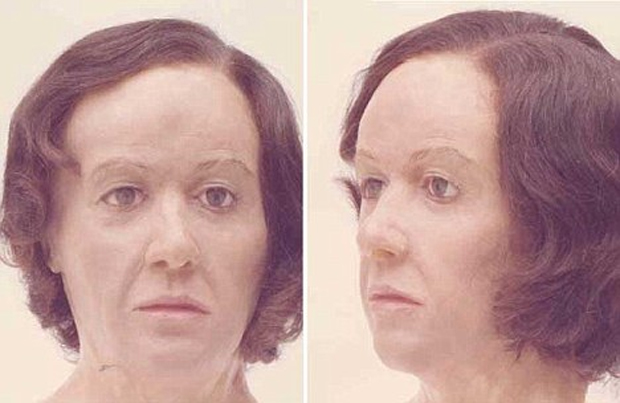
Three-dimensional wax reconstruction of the victims head and face
- She was 5’ 2” in height, aged between thirty five and forty.
- She had a slender build and wore her natural dark brown hair in a page-boy style.
- She had given birth to two or three children and had a displaced septum between her nostrils.
- Her toenails were painted pink – the varnish coming from the Max Factor Maxi range.
- She would have worn a size four shoe.
- Staining on her teeth revealed that she was a heavy smoker that did not look after herself.
- She had a Yorkshire or Lancashire accent, but may not be originally from Scarborough.
- All her upper teeth were missing, she had an upper dental plate fitted, and she had only six lower teeth.
- She had an old fracture to her right ankle and an abnormality to her neck vertebrae which would have caused backache.
- Do you remember someone like this from the shelter in Victoria Street?
- Were you a victim of a burglary or theft by “Hope”, or any of the down and outs that hung around the bus shelter at Victoria Road?
- Were you one of “Hope’s” clients?
- Were you a police officer in Scarborough in the period 1977 – 1979? Did “Hope” come into custody for being drunk and disorderly, soliciting, theft, burglary or vagrancy, or did you see her at the shelter?
- Were you a social worker, health care professional, or member of the Salvation Army that came into contact with “Hope” and other down and outs from Victoria Road Scarborough?
- Did you find a dark blue quilted body warmer, blouse, jumper, dark mini skirt discarded along on the A170?
- Did you hang a full set of formal female dressware on a coat hanger suspended from a tree by the hairpin bend on Sutton Bank.
- Did you serve in the RAF at RAF Linton on Ouse, or RAF Fylingdales in the period 1979 – 1984?
- Were you a taxi driver for Boro Taxis next to the café on Victoria Road, or did you use taxi’s from there? If so, did you see Peter Sutcliffe or “Hope”.
Peter Sutcliffe

Peter Sutcliffe pictured in his TW Clark lorry circa 1976
- Did you see Peter Sutcliffe or his distinctive lorry in York?
- Did you see Peter Sutcliffe (Image at beginning of the article) or a lorry from TW Clarke (image above) in Scarborough or York?
- Did you see Peter Sutcliffe at Victoria Road, Roscoe Street, Andrews of Scarborough (motorcycle dealers), Deardens builders merchants, North Sea Winches D, Wray and Sons, Scarborough Ignition Co Ltd or Pickups or the old goods yard which is now Sainsburys?
- Did you frequent the café in Victoria Road and see Peter Sutcliffe there?
- Did you know the café owner Iris Scott?
If you have any information on the “Nude in the Nettles” mystery that you want to pass on confidentially, you can talk to a journalist by contacting the North Yorks Enquirer using our letters@nyenquirer.uk address. All responses will be treated in the strictest confidence.



